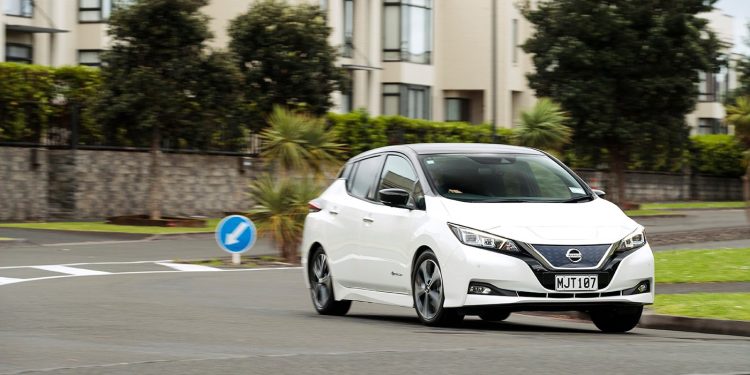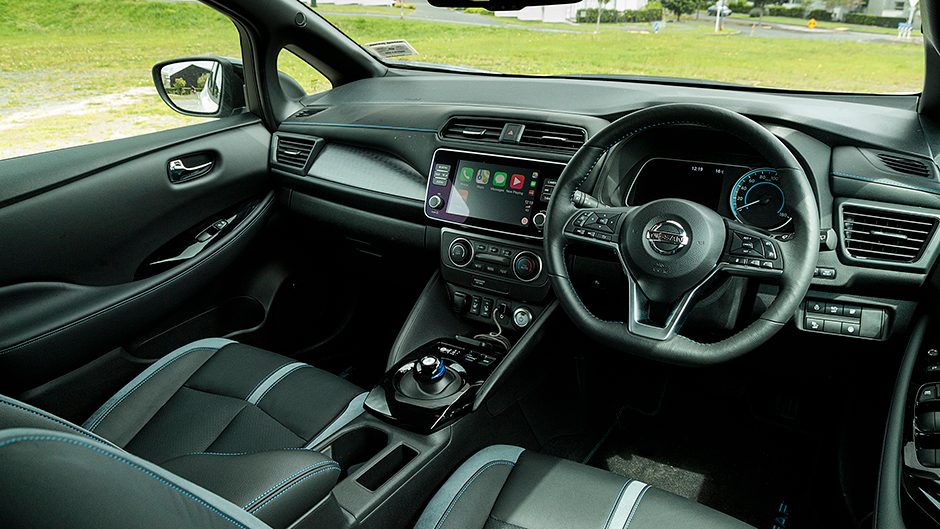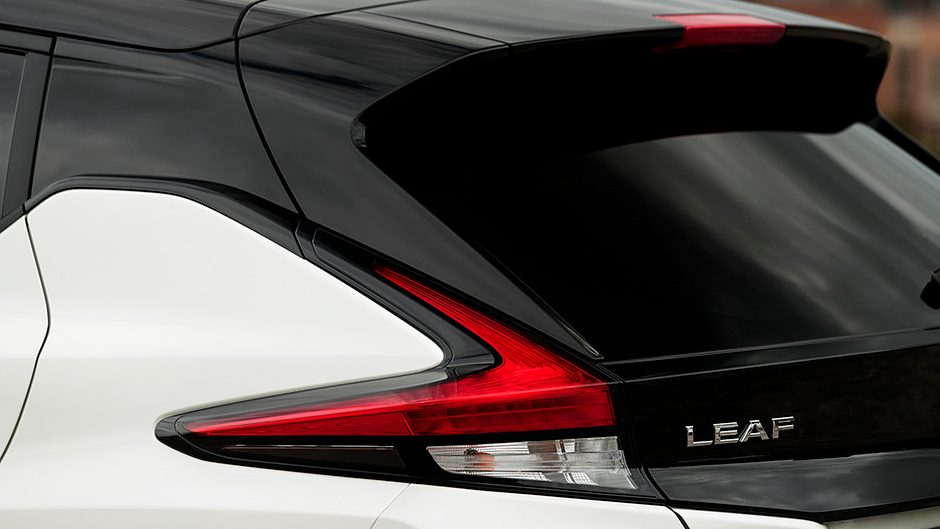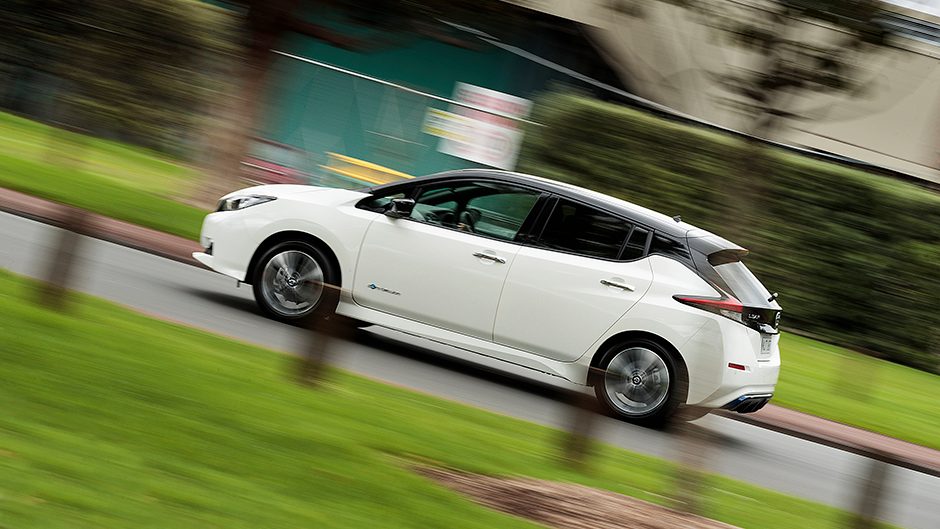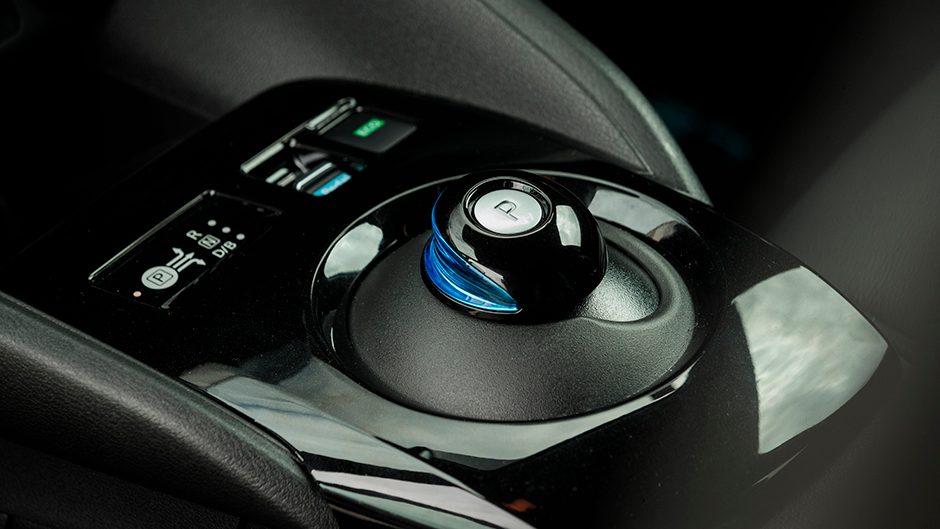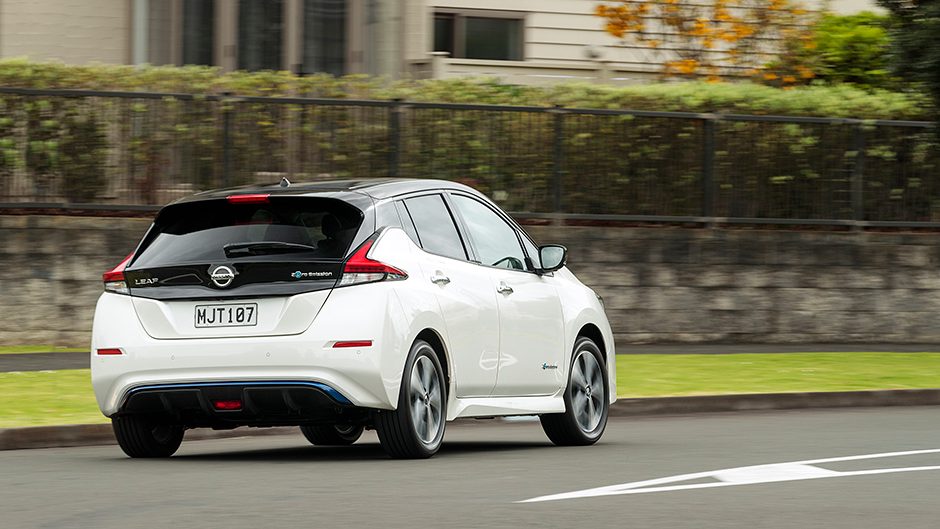2019 Nissan Leaf 110kW review
Words Kyle Cassidy | Photos Tom Gasnier
Do you have to adapt your lifestyle to suit the perceived limitations of an EV? We spend a few weeks with the Nissan Leaf and find that’s not the case at all.
Leaf is still the world’s best selling electric car as Nissan was on the ground early. It’s the most popular EV in New Zealand too thanks to the free flow of used imports, most Leafs here having done duty in Japan somewhere prior. Nissan NZ offered the first Leaf here for a few years though a mix of price pressure from imports and the inability to source the car with the right specification, particularly around safety gear, saw it falter. But the new car is now a starter for New Zealand.
We’ve featured this model before with a drive of an evaluation car last year. But this is the model you can now buy from your local dealer.
Pricing was always going to be tricky. Like the previous version, this has been beaten to market by imports, so we postulated its tag would have to start with a five. And that it has, just squeaking in at $59,990 plus on roads.
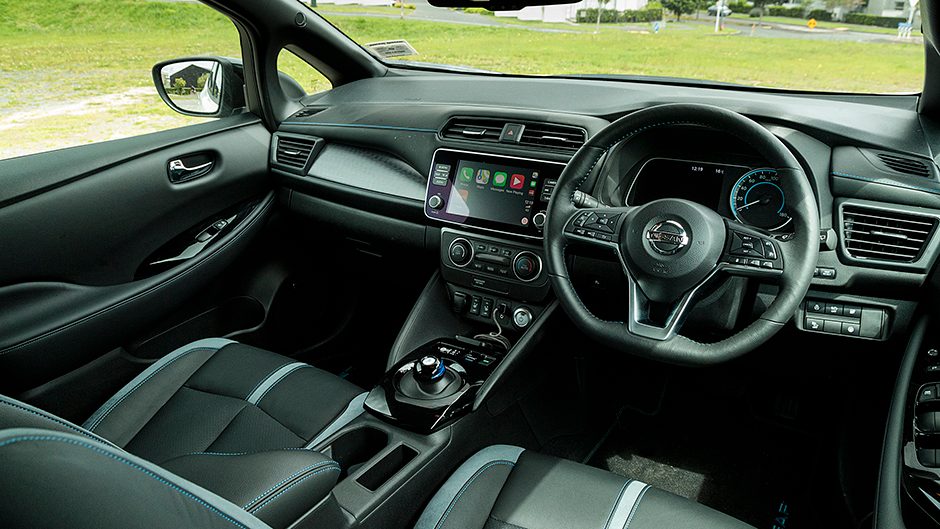
The car is much the same as when we drove it back then, minus the lane keeping function of the ProPilot driving aid system. This is to do with a shared spec with Australia and its compliance rules. This time around we had the Leaf for a few weeks, covering 700km, to help get a better grip with the EV.
While Leaf comes with an adaptor for public AC chargers, home charging cables are an extra. The portable 8amp, three-pin plug adds $660, or you might go for the 16/32amp 6kW/h wall box for the garage. That will set you back $2993 installed (that’s for a ‘standard fitment’). With its CHAdeMO plug, you can hook up at most public fast chargers too, but it’s just too easy to pull into the driveway at the end of the day, plug in and set the timer to charge later at night.
Among the many EV-specific screens on the instrument panel is a time to charge message, showing when the battery will be back to 100 per cent if you were to plug it in then. As you might suspect, range and charge times all depend on usage. Most days we used about 15 to 30 per cent of the available battery, meaning home charging overnight sufficed, and we had a full battery every morning.
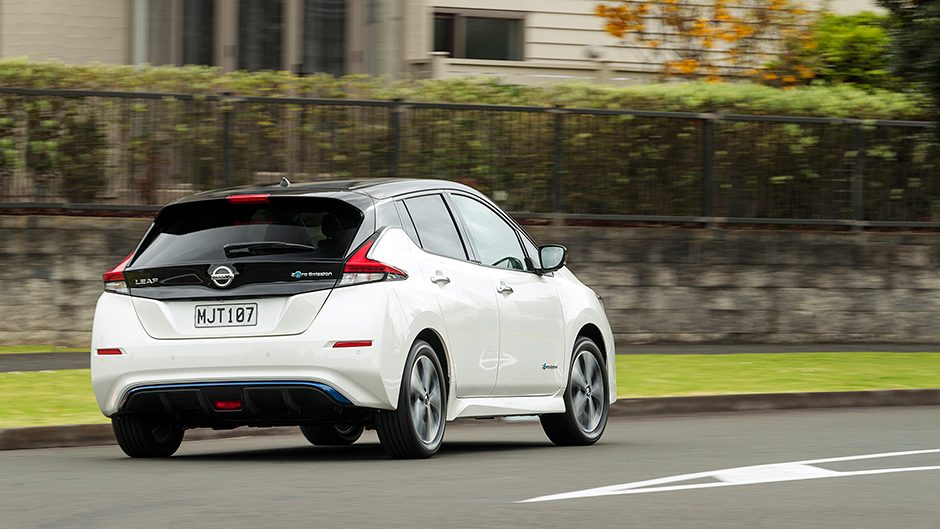
When the battery is down to about 70 per cent, it’ll take about eight hours to recharge on the slow plug. After about 100km of driving, the battery is usually down around the 60 per cent mark, and that will require nine and a half hours on the charger. From 70 per cent to a full charge usually sucked back about 13.5kW/h of electricity, equating to about $3 worth of power.
The lowest we let the battery drop was to 29 per cent, (75km to go), before plugging in to a 50kW charger. This took 35mins to get it back up to 80 per cent/216km. Yes, we parked at the charger five minutes longer than we should have. Oh, the shame.
We stopped in at a mall and used the charger there too, but it was a mere 6kW/h wall box type thing, so the half-hour charge gained us eight per cent/20km. During our first couple of weeks with the Leaf, the range indicator would sit around the 240km mark when full as the average consumption was reading 18.2kwh/100km. But after a few weeks this fell to 16.5 and when fully charged it started indicating a possible range around the 270km mark. Like any EV, you’ll get more miles per charge in city traffic than you will on the motorway.
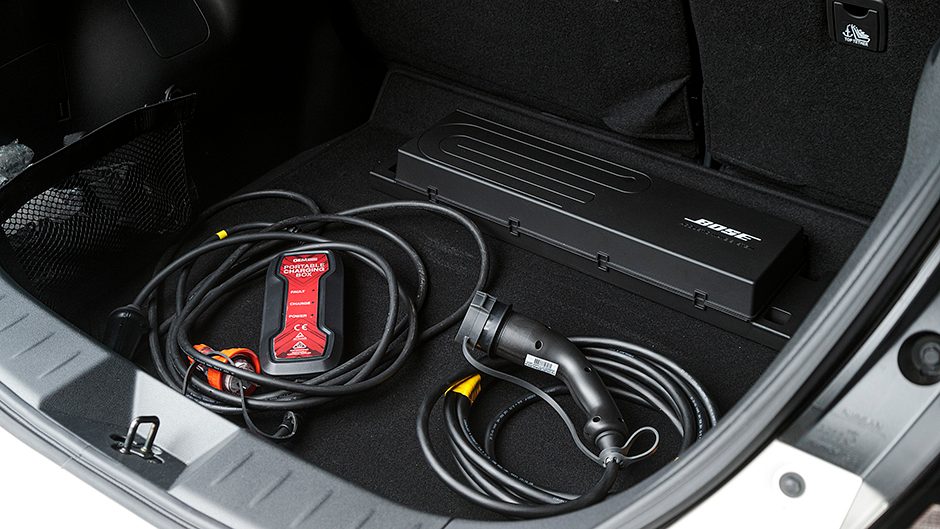
The distance to empty gauge we found to be accurate enough. It has an impossible task to fulfill; just how is it to know exactly where and how you are going to drive? But it adjusts accordingly. We checked it a couple of times, covering distances of around 100km over the course of a day and it was about eight per cent out in terms of indicated range versus actual distance travelled.
The use of the AC doesn’t greatly affect range either and the sat nav will indicate if you have enough range to get where you intend to go. Leaf is equipped with active cruise, which is smooth in operation but disengages when stopped. We didn’t miss the lane departure systems one bit.
We think it strange Leaf still has an analogue speedo. A full-size digital screen in the instrument panel would be more fitting, but there is a sense this is all built with extreme price sensitivity. There are the hard plastic door tops, the lack of padding on the centre console (which the much cheaper Qashqai has) and the steering wheel that doesn’t adjust for reach. There is smartphone connect but only one USB port.
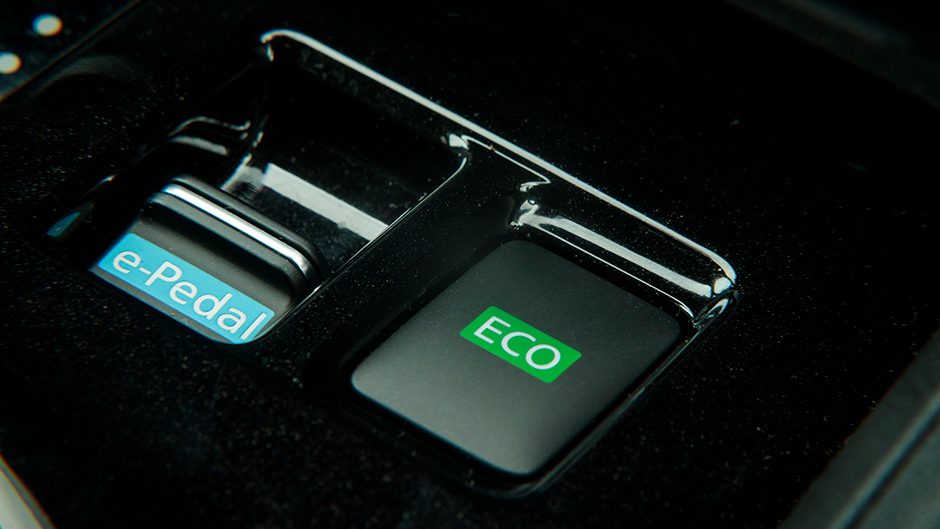
In terms of a compact hatch, it’s practical, but not the biggest on the inside; a Focus for instance offers more space. There’s the weird ‘trans tunnel’ hump in the back which robs space, but it is where one would find the service plug to disconnect the high voltage battery, if you’re wondering. The boot is of an okay size, not massive nor helped by the illogical position of the Bose woofer on the floor.
As a daily driver, this is quiet, smooth and refined, riding well over city streets. While the torque hit won’t snap your neck, it’s punchy and responds instantly to commands from the power pedal. The steering is well devised for city life, light and direct with nothing untoward about the assistance.
Leaf’s e-pedal allows for one-foot driving by maximising the effect of the regenerative braking system. At first it’s just strange, your progress jerky as you release the pedal too quickly and instantly start slowing. However, you do adapt, and with smooth pedal inputs, you can easily have it coming to a halt at precisely the right point. Not only is it quite convenient, but you’re sure to maximise every regen opportunity.
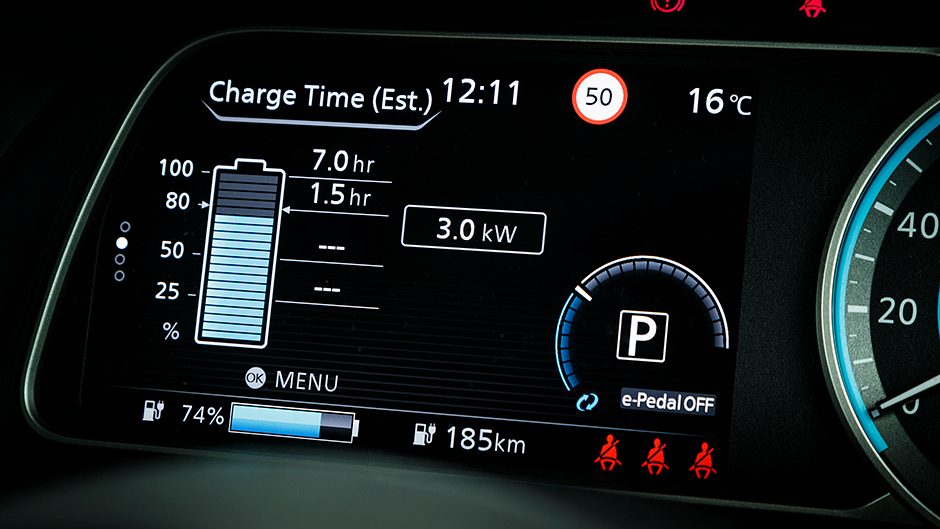
It’s a different approach to the Hyundai/Kia set-up where we opted to maximise the amazing coasting possibilities of an EV in neutral before using the regen to brake, a process made easy by the steering wheel paddles. But the Nissan’s ‘gear shifter’ isn’t that great to use if you want to fiddle between D, B and N, so it’s just easier to adapt to the e-pedal.
There are a few oddities about its operation; when you do have to use the brake pedal, it feels truly weird as it is already semi-engaged which results in quite an abrupt stop as you invariably use too much pressure initially. And it’s a right pain when trying to park, slow-speed manoeuvres become jerky affairs, though the e-pedal is easy to switch on and off in this instance.
The Leaf still engenders an interest from people, wanting to know more about it, but they often don’t hear it coming when they are wandering about a carpark. Your cat will sure know when you turn it on; it must emit some high frequency noise that wakes them from their slumber. You will get odd looks when you roll into the gas station in your Leaf but we were there to fill the petrol can for the lawn mower.
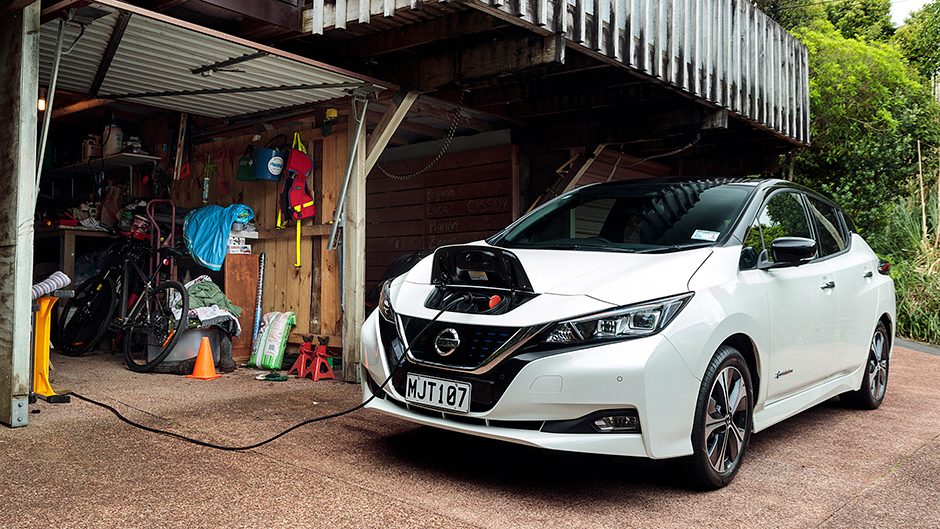
Most wonder if the range is sufficient, to which we say, yes. The Leaf is not a car that will suit everyone, or do everything. Most research around EV owners (in overseas markets that is) suggests the majority own a second conventional car for the times when the EV won’t do. But there are plenty of times when it will.
This excels at short trips, the type where a conventional car is at its least efficient and most polluting. The Leaf copes over a busy weekend easily; running kids to sports, birthday parties, nipping to Bunnings, collecting the groceries and heading out to a BBQ at night, to return home for an overnight rejuicing. And then you have 250 plus kays to do it all again the next day.
| Model | Nissan Leaf | Price | $59,990 |
| Engine | 110kW/320Nm | Drivetrain | front-wheel drive |
| Fuel Use | 0L/100km | C02 Output | 0g/km |
| 0-100km/h | 8.08sec | Weight | 1584kg |


